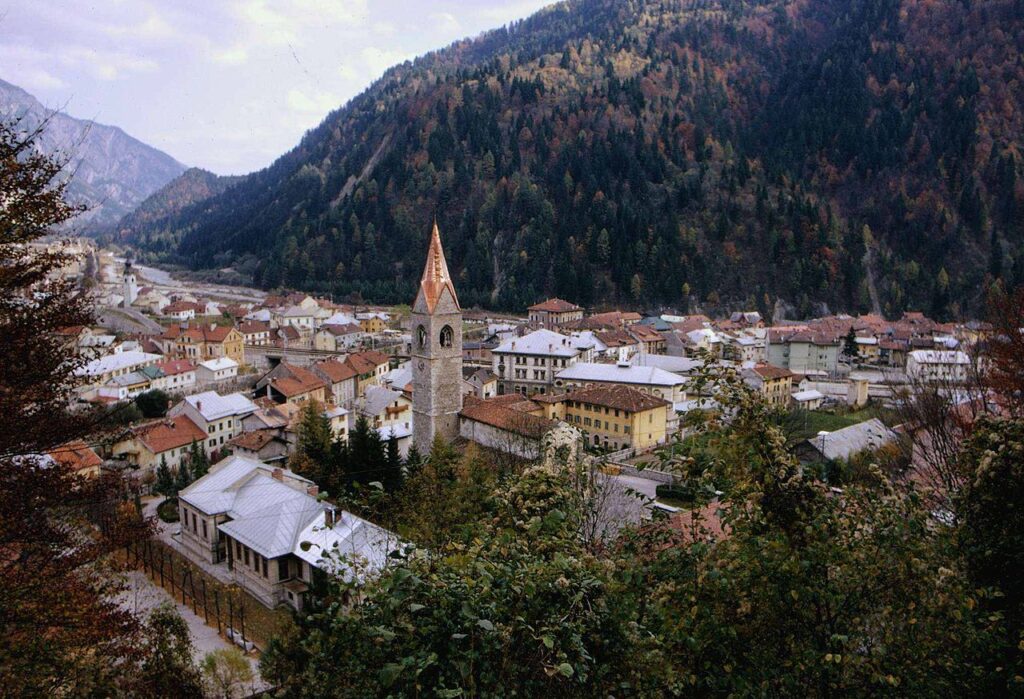The Val Canale, which borders Austria and Slovenia, is now part of the autonomous region of Friuli Venezia Giulia in the far northeast of Italy. The municipalities of Tarvisio/Tarvis, Malborgetto-Valbruna/Malborgeth-Wolfsbach and Pontebba/Pontafel in particular are plurilingual communities that are officially recognized as quadrilingual. In addition to the state language Italian and the regional official language Friulian, the population uses the historical dialect based on South Bavarian, which is a continuation of Carinthian, as well as Slovenian. Standard German is also widely spoken due to the border with Austria.
Until the end of the First World War, the area belonged to Austria, and therefore German was the official language. As such the overwhelming majority of the population was German-speaking. After the annexation of the valley to Italy, the influx of an Italian-speaking population led to plurilingual communities in which each of the three major European language groups (i.e. the Germanic, Romance and Slavic) was represented, so that the area was also referred to as “Little Europe” (cf. Hasenauer et al. 2020).

